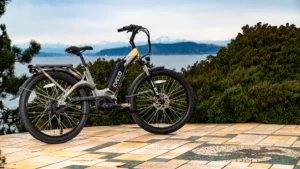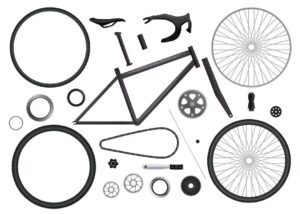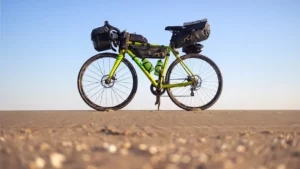وجدت نفسك يومًا واقفًا أمام معدات دراجتك, أتساءل عن الإعداد الذي يناسب مغامرتك القادمة? إذا كنت تناقش بين حزمة المقاعد مقابل العديلات لرحلة ركوب الدراجة الخاصة بك, أنت لست وحدك. يقدم كلا الخيارين فوائد متميزة, لكن اختيار المنتج المناسب يمكن أن يؤثر بشكل كبير على راحتك وكفاءتك على الطريق. تعمق في هذا الدليل حيث نقوم بمقارنة مجموعات المقاعد وسلال الملابس لمساعدتك في اختيار ما يناسبك حقيبة الدراجة لاحتياجات ركوب الدراجات الخاصة بك.
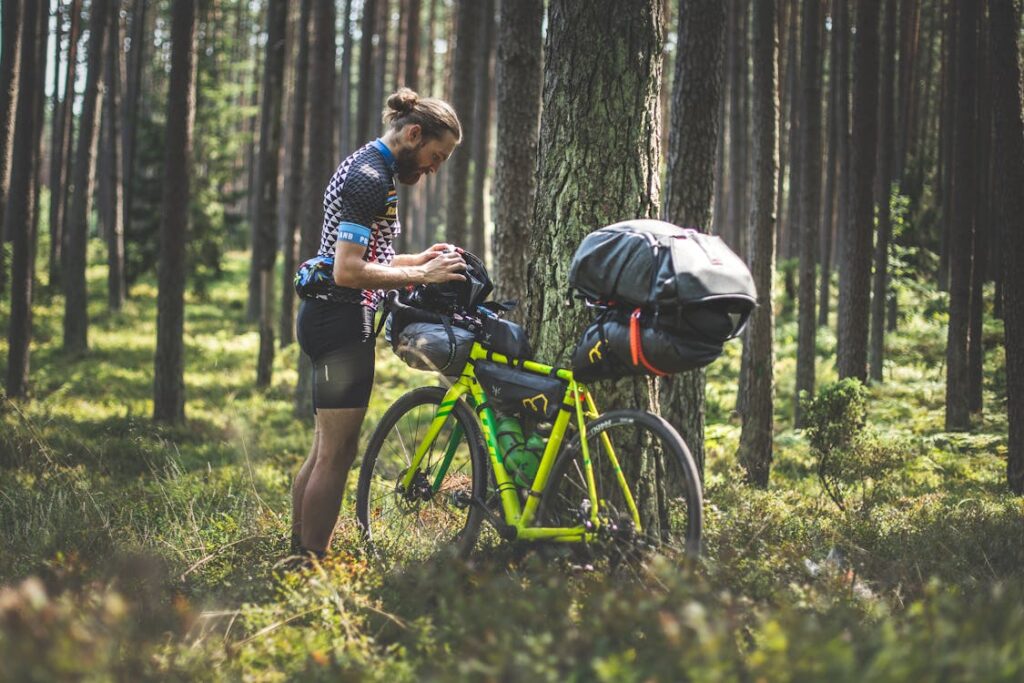
ما هي حزمة المقعد على الدراجة?
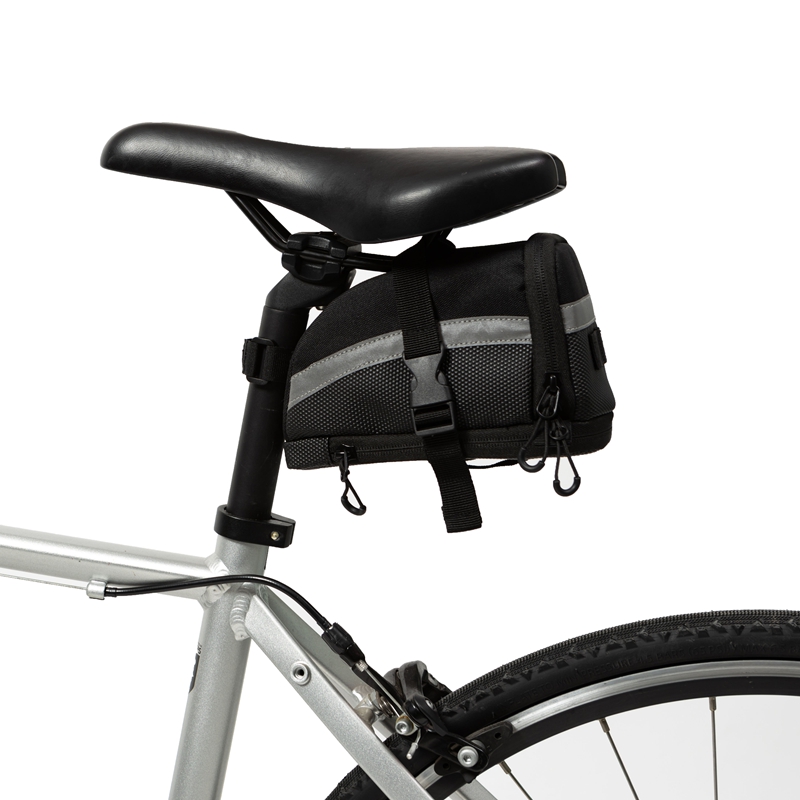
حزمة مقعد, يُعرف أيضًا باسم أ حقيبة السرج, هو حل تخزين مدمج يتم توصيله مباشرة بسرج دراجتك وعمود المقعد. تم تصميمه مع مراعاة البساطة والبساطة, توفر حزم المقاعد طريقة مبسطة لحمل المعدات الأساسية. عادة ما تكون هذه الأكياس أصغر حجمًا وأخف وزنًا من الحقائب, مما يجعلها مثالية لأولئك الذين يقدرون المظهر الجانبي الأنيق والسحب الديناميكي الهوائي المنخفض. يضمن نظام ربط حزمة المقعد بقاءها مثبتة بشكل آمن, حتى على التضاريس الوعرة, توفير خيار موثوق لتخزين العناصر التي تحتاج إلى الوصول إليها بسرعة.
ما هو العديلات?
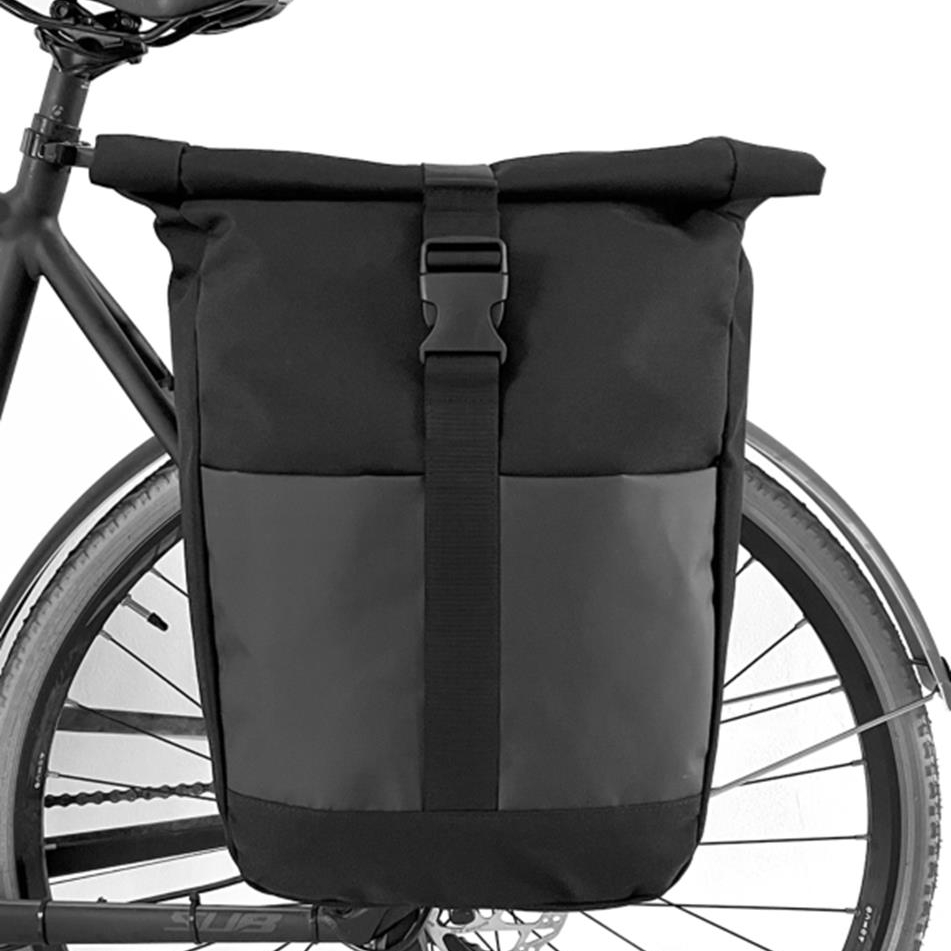
سلهي أكبر, أكياس أكثر قوة تعلق على الرف الخلفي للدراجة. أنها تأتي في مختلف الأحجام والتصاميم, غالبًا ما تتميز بمقصورات متعددة للتغليف المنظم. توفر العديلات سعة تخزين كبيرة, مما يجعلها مناسبة للرحلات الطويلة أو لأولئك الذين يحتاجون إلى الكثير من المعدات. عادة ما تكون مصنوعة من مواد متينة يمكنها تحمل الظروف القاسية, والعديد من الموديلات مقاومة للماء أو مقاومة للماء لحماية ممتلكاتك. حجم العديلات وكميتها, لكن, يمكن أن يؤثر على التعامل مع الدراجة ويتطلب دراسة متأنية عند التحميل.
هل حقائب السلة تستحق العناء؟?
إن حقائب Pannier تستحق النظر فيها بالفعل إذا كنت تعطي الأولوية للتخزين والتنظيم الكافي. قدرتها الكبيرة تسمح لك بحمل المزيد من المعدات, مما يجعلها خيارًا مفضلاً لجولات الدراجات الطويلة أو الرحلات التي تحتاج فيها إلى نقل عناصر مختلفة. يمكن أن تبقي معداتك منفصلة ومنظمة دون الحاجة إلى البحث في حقيبة واحدة كبيرة. لكن, يمكنهم إضافة الوزن وتغيير توازن الدراجة, والتي قد لا تكون مثالية لجميع راكبي الدراجات.
ما هو حجم العديلات التي أحتاجها؟?
يعتمد اختيار العديلات ذات الحجم المناسب على احتياجاتك الخاصة وطول رحلتك.
- للرحلات القصيرة أو التعبئة البسيطة, العديلات الصغيرة تتراوح من 10 ل 20 لتر قد يكون كافيا. توفر هذه مساحة كافية للضروريات دون زيادة التحميل على دراجتك.
- لمغامرات أطول, العديلات أكبر من 30 ويفضل لتر أو أكثر, توفر مساحة واسعة للملابس, طعام, وغيرها من الضروريات.
كيفية استخدام رف السلة?
يعد حامل السلة مكونًا مهمًا لاستخدام السلال بشكل فعال. تعلق على الجزء الخلفي من الدراجة الخاصة بك, يوفر الحامل منصة قوية يمكن تأمين السلال عليها. يتضمن التثبيت تركيب الحامل على إطار الدراجة والتأكد من محاذاته وإحكامه بشكل صحيح. بمجرد التثبيت, يتم ربط العديلات بالحامل باستخدام الخطافات أو الأشرطة, والتي ينبغي تعديلها لضمان ملاءمة مريحة.
حزمة المقاعد مقابل panniers: ماهو الفرق
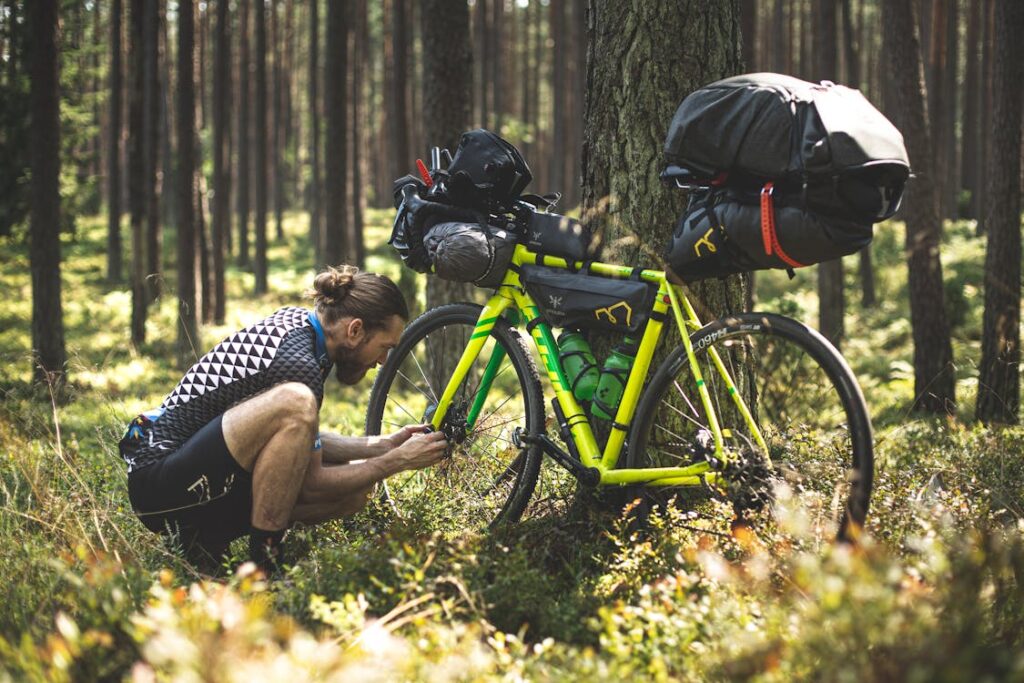
في هذا القسم, سوف نتعمق في هذه الاختلافات بين مجموعة المقاعد مقابل العديلات, تفصيل كيفية أداء كل نوع من أنواع التروس في جوانب مختلفة. سواء كنت تهدف إلى إعداد مبسط أو تحتاج إلى أقصى قدر من مساحة التخزين, سترشدك هذه المقارنة في اختيار المعدات التي تناسب احتياجاتك في ركوب الدراجات.
سهولة الاستخدام: طريقة التركيب والتعبئة
عندما يتعلق الأمر بسهولة الاستخدام, تتمتع كل من حزم المقاعد والسلال بمزاياها. توفر حزم المقاعد نظام ربط مباشر وسريع التثبيت والإزالة بشكل عام. التعبئة والتفريغ تتسم بالكفاءة, مع سهولة الوصول إلى العناصر الخاصة بك دون الحاجة إلى النزول.
في المقابل, تتطلب العديلات مزيدًا من الجهد لإرفاقها وفصلها, لأنها تنطوي على تثبيتها على حامل بخطافات أو أشرطة. لكن, مرة واحدة في مكانه, يمكن أن تكون السلال أكثر ملاءمة للتعبئة المنظمة والوصول إلى عناصر متعددة.
القدرة والتعبئة
السعة هي المكان الذي تتألق فيه العديلات حقًا. مع حجمها الأكبر ومقصوراتها المتعددة, أنها توفر مرونة تخزين كبيرة. يمكنك تنظيم معداتك بشكل أكثر فعالية, الحفاظ على كل شيء من الملابس إلى معدات الطبخ منفصلاً بشكل أنيق.
حزم المقاعد, بينما أكثر انسيابية, لديك مساحة محدودة. حجمها الصغير مناسب للعناصر الأساسية, ولكن قد يكون من الصعب تركيب معدات أكبر أو أكبر حجمًا دون التضحية ببعض كفاءة التعبئة.
المناولة
يمكن أن يؤثر التعامل مع الاختلافات بين مجموعات المقاعد والسلال بشكل كبير على تجربة الركوب الخاصة بك. تم تصميم مجموعات المقاعد لتقليل السحب الديناميكي الهوائي والحفاظ على رحلة أكثر توازناً. لا يؤثر موضعها على استقرار الدراجة بقدر ما يؤثر على العديلات.
على الجانب الآخر, العديلات, بسبب حجمها ووزنها الأكبر, يمكن أن تؤثر على التعامل مع الدراجة, وخاصة من حيث التوازن والقدرة على المناورة. يمكن أن يكون هذا أكثر وضوحًا على المسارات التقنية أو التضاريس غير المستوية.
قيمة
عند مقارنة التكلفة, تأتي حزم المقاعد عمومًا بسعر أقل من العديلات عالية الجودة. ويرجع ذلك إلى تصميمها الأبسط واستخدام عدد أقل من المواد. لكن, قد يكون الاستثمار في السلال مفيدًا إذا كنت بحاجة إلى سعة تخزين كبيرة ومتانة للرحلات الطويلة. وتعكس التكلفة الأعلى الفوائد الإضافية للحجم الأكبر, تنظيم أفضل, وتعزيز المتانة.
الملاءمة للتضاريس
لتضاريس متنوعة, توفر مجموعات المقاعد ميزة واضحة من حيث الحفاظ على مركز ثقل أقل وتقليل التداخل مع التعامل مع الدراجة. إنها مناسبة تمامًا للطرق المرصوفة بالحصى والمسارات الفردية حيث يُفضل الإعداد المدمج.
العديلات, في حين أنها متينة وقادرة على التعامل مع الظروف القاسية, قد يؤثر على التعامل مع الدراجة على التضاريس الصعبة. يمكن أن يكون حجمها مرهقًا, خاصة عند التنقل في المسارات الضيقة أو الفنية.
يستخدم
عندما يتعلق الأمر بالتطبيقات العملية, كل واحد منهم يلبي احتياجات ركوب الدراجات المختلفة.
مثالية لعشاق ركوب الدراجات الذين يعطون الأولوية للنهج البسيط, تتفوق مجموعات المقاعد في المواقف التي تكون فيها المساحة أعلى من قيمتها. إنها مثالية للرحلات القصيرة إلى المتوسطة حيث تحتاج فقط إلى الأساسيات - فكر في الرحلات الليلية أو الرحلات الاستكشافية التي تستغرق يومًا كاملاً. تصميمها المدمج مناسب تمامًا للراكبين الذين يتعاملون مع التضاريس المتنوعة ويفضلون الأناقة, الملف الديناميكي الهوائي. سواء كنت تتنقل في مسارات وعرة أو تستمتع برحلة ذات مناظر خلابة, توفر حزم المقاعد المرونة والبساطة اللازمة لهذه المغامرات.
بالنسبة لأولئك الذين يحتاجون إلى مساحة تخزين وتنظيم كبيرة, خاصة في الرحلات الطويلة أو التنقلات اليومية, العديلات هي الاختيار الأمثل. إنها مفيدة بشكل خاص لجولات الدراجات الممتدة حيث يكون حمل مجموعة من المعدات والإمدادات ضروريًا. بالإضافة إلى ذلك, إذا كنت تبحث عن أفضل سلال الدراجات للتنقل بالكمبيوتر المحمول وأساسيات العمل الأخرى, توفر العديلات مساحة واسعة ومقصورات متعددة للحفاظ على كل شيء منظمًا وآمنًا.
خاتمة
لذا, وهو الأفضل لمغامرات ركوب الدراجات الخاصة بك: حزمة مقعد مقابل العديلات? يتعلق الأمر حقًا بما تقدره أكثر في معداتك. توفر حزم المقاعد انسيابية, نهج أضيق الحدود مثالي للتعبئة الخفيفة والتضاريس المتنوعة. على الجانب الآخر, توفر العديلات مساحة تخزينية كبيرة ومزايا تنظيمية للرحلات الطويلة. قم بوزن أولوياتك وتفاصيل رحلتك لاتخاذ الخيار الأفضل بشكل أكثر سلاسة, رحلة أكثر متعة.

